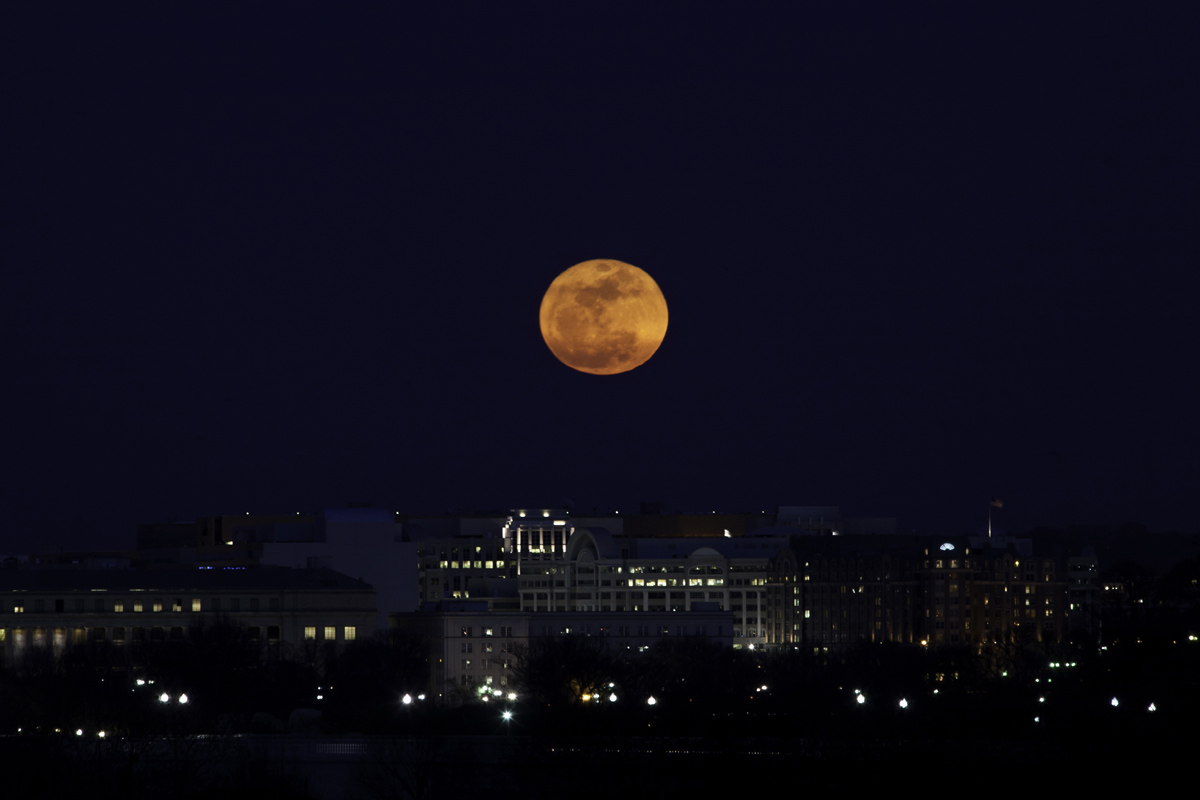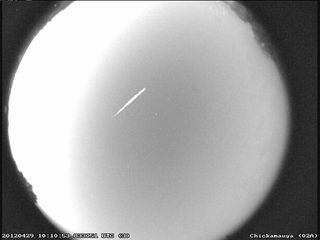'Supermoon' May Outshine Meteor Shower This Weekend

UPDATE: For the latest on Saturday's "supermoon" and meteor shower, read our latest story here: Spectacular 'Supermoon' Wows Skywatchers Around the World
The biggest full moon of the year, a so-called "supermoon," will take center stage when it rises this weekend, and may interfere with the peak of an annual meteor shower created by the leftovers from Halley's comet.
The supermoon of 2012 is the biggest full moon of the yearand will occur on Saturday (May 5) at 11:35 p.m. EDT (0335 May 6), though the moon may still appear full to skywatchers on the day before and after the actual event. At the same time, the annual Eta Aquarid meteor shower will be hitting its peak, NASA scientists say.
"Its light will wash out the fainter Eta Aquarid meteors," NASA meteor expert Bill Cooke of the Marshall Space Flight Center told SPACE.com in an email. Still, Cooke said there's a chance that the brightest fireballs from the meteor display may still be visible.
A supermoon occurs when the moon hits its full phase at the same time it makes closest approach to Earth for the month, a lunar milestone known as perigee. Scientists also refer to the event as a "perigee moon," according to a NASA video on the 2012 supermoon.
That's exactly what will happen on Saturday, when the moon will swing within 221,802 miles (356,955 kilometers) of Earth — its closest approach of the entire year. Because the moon's orbit is not exactly circular, there is a 3-percent variation in its closest approaches to Earth each month. The average Earth-moon distance is about 230,000 miles (384,400 km).
With May's full moon timed with the moon's perigee, it could appear 14 percent bigger and 30 percent brighter than other full moons of 2012, astronomer Tony Phillips explained in a NASA video. There is absolutely no chance the supermoon will threaten Earth.
Get the Space.com Newsletter
Breaking space news, the latest updates on rocket launches, skywatching events and more!
The last supermoon was in March 2011. At the time, it was the biggest and brightest full moon in 18 years. [Amazing Supermoon Photos from 2011]
While the moon's extra brightness during the supermoon may wash out some of the fainter Eta Aquarid meteors, all is not lost, Cooke said.
Cooke anticipates that the 2012 Eta Aquarid meteor shower will peak at up to 60 meteors per hour on May 5.
The eta Aquarid display is one of two meteor showers created by dust from Halley's comet (the Orionid shower in October is the other). It occurs every April and May when the Earth passes through a stream of debris cast off by comet Halley during its 76-year trip around the sun.

The eta Aquarid meteor shower of 2012 actually began on April 19 and ends on May 28, but its peak is in the overnight period between Saturday and Sunday (May 5 and 6).
"Meteor watchers in the Southern Hemisphere stand the best chance of seeing any meteors," a NASA advisory from the agency's Jet Propulsion Laboratory explained.
If you snap an amazing photo of the supermoon of May or the Eta Aquarid meteor shower and would like to share it with SPACE.com for a story or gallery, send photos and comments to managing editor Tariq Malik at: tmalik@space.com.
You can follow SPACE.com Managing Editor Tariq Malik on Twitter @tariqjmalik. Follow SPACE.com for the latest in space science and exploration news on Twitter @Spacedotcom and on Facebook.
Join our Space Forums to keep talking space on the latest missions, night sky and more! And if you have a news tip, correction or comment, let us know at: community@space.com.

Tariq is the Editor-in-Chief of Space.com and joined the team in 2001, first as an intern and staff writer, and later as an editor. He covers human spaceflight, exploration and space science, as well as skywatching and entertainment. He became Space.com's Managing Editor in 2009 and Editor-in-Chief in 2019. Before joining Space.com, Tariq was a staff reporter for The Los Angeles Times covering education and city beats in La Habra, Fullerton and Huntington Beach. In October 2022, Tariq received the Harry Kolcum Award for excellence in space reporting from the National Space Club Florida Committee. He is also an Eagle Scout (yes, he has the Space Exploration merit badge) and went to Space Camp four times as a kid and a fifth time as an adult. He has journalism degrees from the University of Southern California and New York University. You can find Tariq at Space.com and as the co-host to the This Week In Space podcast with space historian Rod Pyle on the TWiT network. To see his latest project, you can follow Tariq on Twitter @tariqjmalik.











